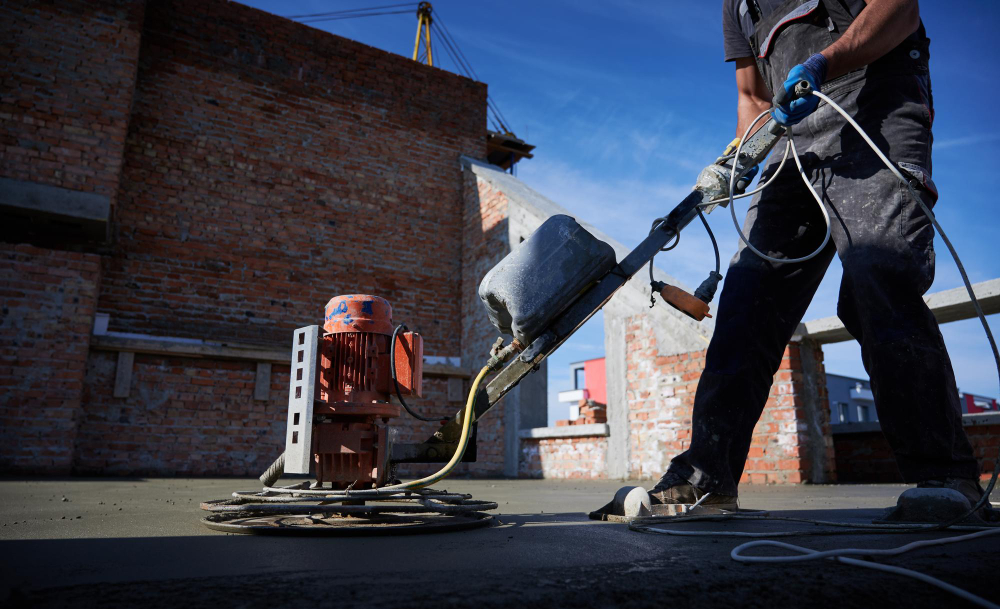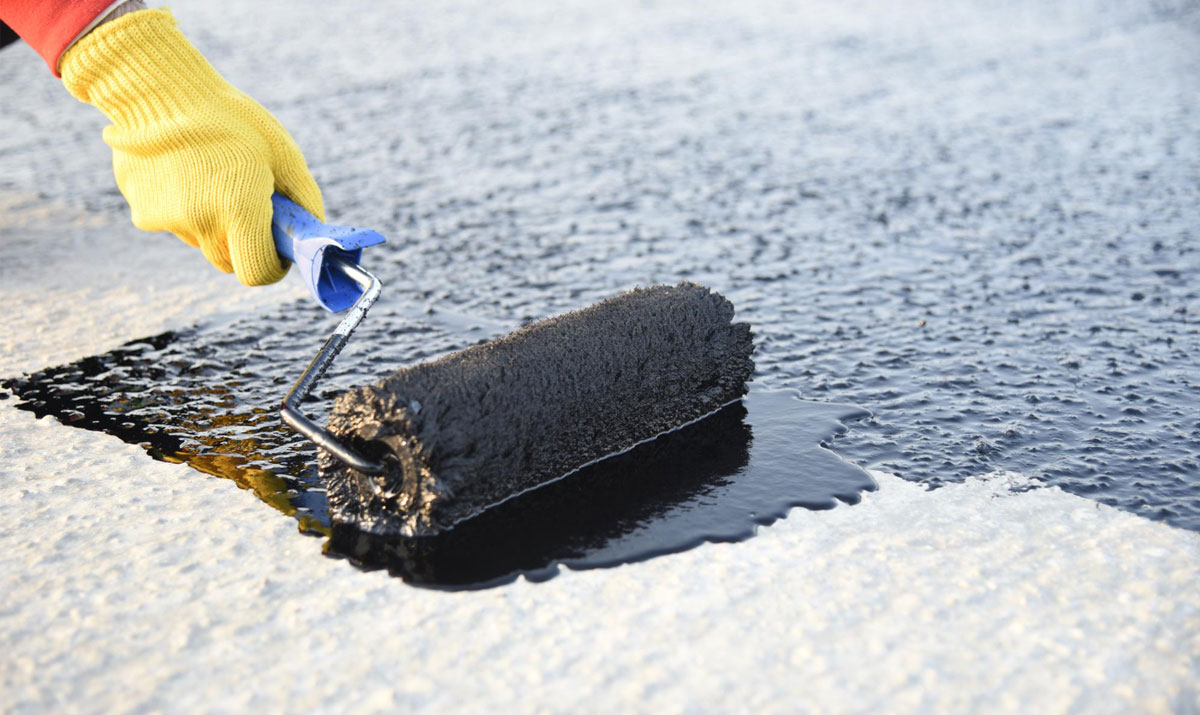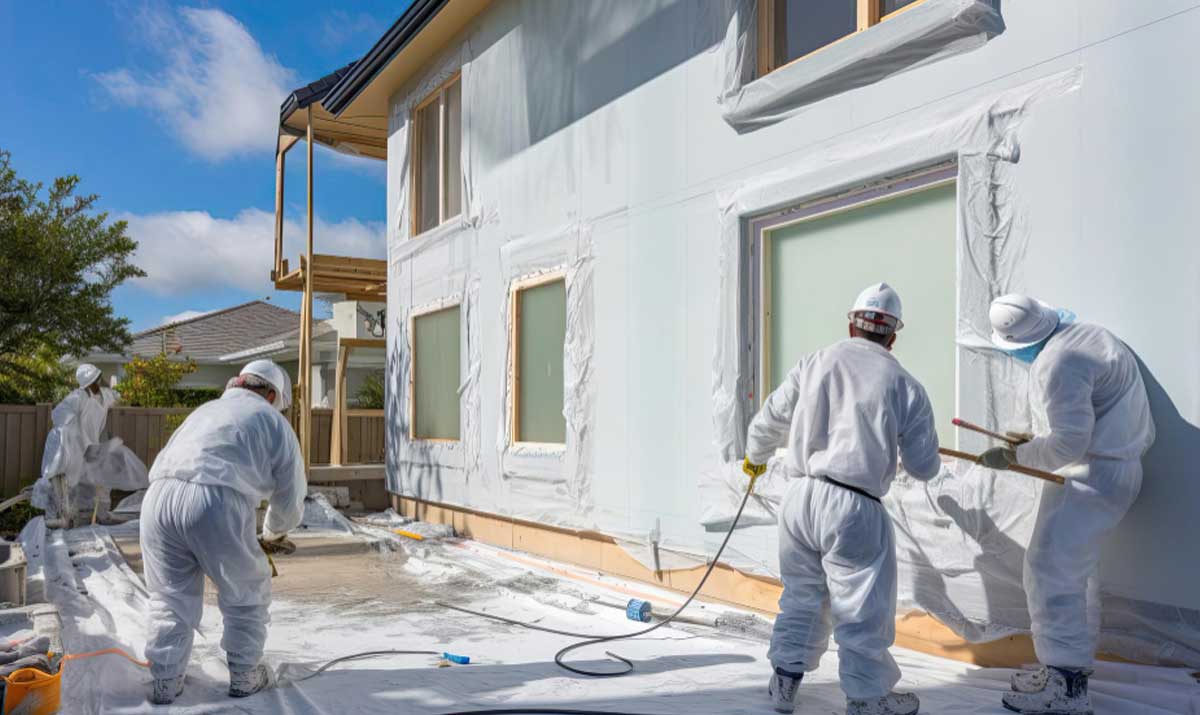Cementitious Waterproofing: An Effective Solution for Moisture Protection
Cementitious waterproofing is a construction technique that offers effective protection against water infiltration and moisture-related damages. This method involves the application of specially formulated cement-based coatings to surfaces, creating a barrier that prevents water from seeping into the underlying structure. Whether it’s concrete or masonry surfaces, cementitious waterproofing proves to be a reliable solution for both positive- and negative-side waterproofing needs.
Cementitious waterproofing has gained prominence as an effective method to protect surfaces from water infiltration and moisture-related issues. Let’s delve into the key aspects of this technique to understand its effectiveness, application, and characteristics.
What is Cementitious Waterproofing?
Cementitious waterproofing involves the application of cement-based coatings to surfaces, forming a protective barrier that prevents water from seeping into the underlying structure. These coatings are typically composed of a mixture of cement, fine aggregates, and waterproofing additives. When applied correctly, they create a dense and impermeable layer that resists water penetration.
Effectiveness of Cementitious Waterproofing
Cementitious waterproofing is known for its effectiveness in providing a long-lasting solution against water leaks and dampness. Cementitious waterproofing products are generally considered effective in providing moisture protection to various surfaces. These products are commonly used in wet areas such as bathrooms due to their ability to withstand water exposure. When applied properly, cementitious waterproofing can create a strong and durable moisture barrier, helping to prevent water-related damage, mold growth, and structural deterioration. This method is commonly used for basements, foundations, roofs, balconies, and other areas where moisture infiltration is a concern.
Cementitious Waterproofing Application Areas
Cementitious waterproofing finds its application in a range of scenarios. It is commonly used for:
- Bathrooms: The inherent moisture-resistance of cementitious coatings makes them suitable for bathroom areas where water exposure is frequent.
- Foundations: Applying cementitious waterproofing to foundation walls helps prevent water from seeping into the building’s structure.
- Roofs and Balconies: These areas are vulnerable to water infiltration. Cementitious coatings can provide reliable protection against moisture damage.
- Basements: Since basements are prone to dampness and water intrusion, cementitious waterproofing can be applied to keep them dry.
Application Process of Cementitious Waterproofing
Applying cementitious waterproofing involves several steps. The surface needs to be cleaned thoroughly to ensure proper adhesion of the coating. Any cracks or voids should be repaired before the waterproofing material is applied. The coating mixture is then prepared by mixing the cementitious material with water according to the manufacturer’s instructions. This mixture is then applied to the surface using a brush, trowel, or spray equipment. Multiple coats might be necessary for optimal protection.
Thickness of Cementitious Waterproofing
The thickness of cementitious waterproofing can vary based on the specific product being used and the requirements of the project. Typically, a single coat can range from 1 to 2 millimeters in thickness. However, multiple coats may be applied to achieve a greater thickness if needed. It’s important to follow the manufacturer’s guidelines for application and thickness to ensure the best results.
Advantages and Disadvantages of Cementitious waterproofing
Cementitious waterproofing offers advantages such as effective moisture protection, durability, and suitability for wet areas. However, it may have limitations related to joint or crack movement tolerance. Applying liquid membrane forms of cementitious coatings using methods like spraying, rolling, or troweling can be a bit challenging.
Cementitious waterproofing is a good choice for waterproofing concrete and masonry structures in Abu Dhabi, UAE because it is durable and can withstand the high temperatures and humidity conditions in the country. When choosing a cementitious waterproofing material for Abu Dhabi and UAE, it is important to select a material that is specifically designed for use in hot and humid climates.It is also important to have a cementitious waterproofing system installed by a qualified professional to ensure that it is applied properly and will provide the best possible protection against water infiltration. Contact us today.
Is cementitious waterproofing effective?
Yes, cementitious waterproofing is an effective way to protect concrete and masonry structures from water infiltration. It is a durable and affordable material that can be applied to a variety of surfaces.
What is meant by cementitious waterproofing?
Cementitious waterproofing is a type of waterproofing that uses cement, sand, and admixtures to create a barrier that blocks water from entering. It is typically applied in two coats to achieve a minimum dry film thickness of 1.0mm.
Where do you apply cementitious waterproofing?
Cementitious waterproofing can be applied to a variety of surfaces, including:
- Foundations
- Basement walls
- Patios
- Decks
- Swimming pools
- Wet areas in bathrooms and kitchens
What is the thickness of cementitious waterproofing?
The thickness of cementitious waterproofing will vary depending on the type of waterproofing material used and the desired level of protection. However, it is typically applied in two coats to achieve a minimum dry film thickness of 1.0mm.
What is the difference between cementitious and bituminous waterproofing?
Cementitious waterproofing and bituminous waterproofing are both effective ways to waterproof concrete and masonry structures. However, there are some key differences between the two materials:
- Cementitious waterproofing is typically more breathable than bituminous waterproofing. This means that it allows moisture to escape from the substrate, which can help to prevent mold and mildew growth.
- Cementitious waterproofing is typically less expensive than bituminous waterproofing.
- Cementitious waterproofing is typically more difficult to apply than bituminous waterproofing.
What is the composition of cementitious waterproofing system?
A cementitious waterproofing system typically includes:
- Cement
- Sand
- Admixtures
- Aggregates (optional)
The admixtures are added to the cement and sand mixture to improve the properties of the waterproofing material. For example, some admixtures can help to make the waterproofing material more flexible or more resistant to chemicals.
How is cementitious waterproofing applied?
Cementitious waterproofing is typically applied by a professional waterproofing contractor. The following are the steps involved in applying cementitious waterproofing:
- The substrate is prepared by cleaning it and removing any loose material.
- A primer is applied to the substrate to improve the adhesion of the waterproofing material.
- The waterproofing material is applied to the substrate in two coats.
- The waterproofing material is allowed to dry completely.
- The waterproofing material is protected from rain or other moisture until it is fully cured.
Conclusion
Cementitious waterproofing proves its effectiveness in safeguarding structures against water infiltration and related issues. It finds application in areas prone to moisture exposure, such as bathrooms, foundations, roofs, and basements. By creating a dense and impermeable layer, cementitious waterproofing helps maintain the integrity of buildings and prevents potential water-related damage.
Cementitious waterproofing offers an effective and durable solution to protect surfaces from moisture and water damage. By creating a breathable yet impermeable barrier, this technique helps maintain the integrity of structures while preventing potential issues associated with water infiltration. Whether used for residential or commercial construction, cementitious waterproofing proves its worth as a reliable choice for safeguarding surfaces against the damaging effects of moisture.





